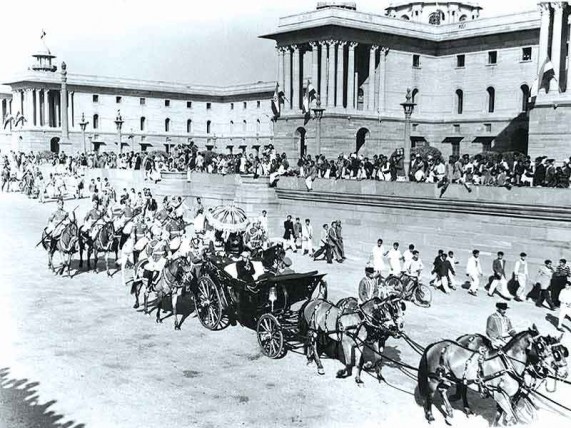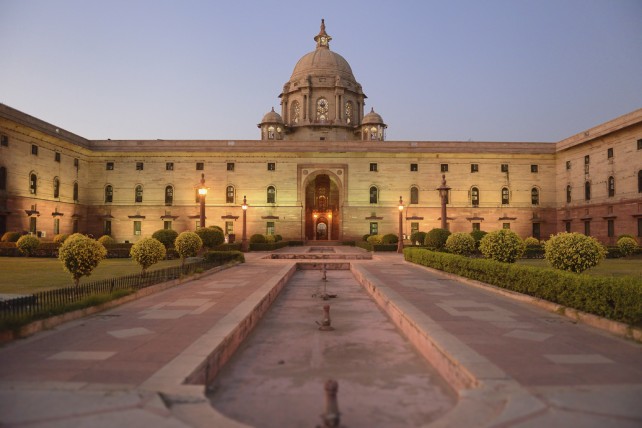8 questions about the Indian Republic Day you wanted to ask but never bothered to
If it is the Republic Day, we think the parade. And rightly so. For the pomp and pageantry that it displays is a sight for sore eyes. However, the republic day is much more and greater than just the sights and sounds. But, how much do we know about it beyond the obvious?
We answer seven questions that you always wanted to ask but you never bothered to.
1. Why is the Republic Day celebrated?

Simply put, the republic day marks India’s birth as a modern nation. Which is that we gave ourselves a constitution which came into force on January 26, 1950. But the Republic Day celebrations is actually a three-day affair which begins with the President taking the salute at the parade and ending with the soulful and stirring ‘beating the retreat’ ceremony at the capital’s Vijay Chowk.
2. But why specifically on January 26 and not any other date?

The constituent assembly of India had actually signed off on the new constitution of independent India on 26 November 1949. However, the official promulgation was deferred to January 26 to mark the call of Purna Swaraj (complete self-rule) given by Jawaharlal Nehru on the banks of the river Ravi in Lahore in 1930.
3. What is so special about the Indian constitution?

It is a remarkable document. First of all it is the longest constitution on the world. But even more, it laid down the idea of India. Democracy, respect for and freedom to practise any religion or faith; the universal right to vote (this was in 1950, when the US allowed the Blacks to vote only a full 15 years later); were all the gifts of the Constitution.
But more importantly, the Constitution stands starkly forth for the vision it embodied in very tumultuous times. When the constituent assembly was debating the character and provisions of the constitution, this was the context: Barbaric partition riots in which at least about a million people were killed; the largest migration of humans in history estimated at 14 million; war with Pakistan over Kashmir, the Bengal famine which had taken the lives of up to 3 million people, amongst others.
It is a tribute to the character and sagacity of the fathers of our constitution that they produced such a modern contract for the people of India in the most trying circumstances imaginable. If India has not gone the Pakistan way, we have largely to thank the amazing body of men who framed the Constitution.
4. Where is the original constitution kept?

The original constitution is a hand-written document that is kept in a helium-filled case at the Parliament library in New Delhi. There are two copies, one each in English and Hindi.
5. What is the composition of the parade?

The event is easily the most spectacular regular parade anywhere in the world. The parade involves over 25 marching and cavalry contingents, more than 20 military bands, 30 or more cultural tableaux and a flypast of over three dozen aircrafts. The parade is marked by the participation of over a 1,500 schoolchildren and NCC cadets.
6. What is the route of the parade?

The Republic Day Parade takes places on the Rajpath which begins at the Vijay Chowk, right in front of the imposing gates of the Rashtrapati Bhawan, flanked by the North and South Block. It then winds it way around the India Gate and along the avenues of Lutyen’s Delhi to culminate at the Red Fort in Old Delhi – a distance of almost 7 kms.
7. Were the first few republic days held at Rajpath?

No, the first few were merely military march pasts which were held until 1954 on Kingsway, Lal Kila, and the Ramlila Ground, all in Delhi. It was only in 1955 that the parade acquired its current site and expanded form. The biggest change being the introduction of cultural pageantry, to what was until then a strictly military affair.
8. Who have been the chief guests at the republic day parade before President Obama?

President Sukarno of Indonesia was the chief guest at the first republic day in 1950. In 1955, when the parade was moved to its present location at Rajpath, Governor General Malik Ghulam Muhammad of Pakistan had the honour. The present queen of England Elizabeth was the chief guest in 1961 and President Nelson Mandela of South Africa in 1995. King Abdullah bin Abdulaziz al-Saud of Saudi Arabia, who expired a few days ago, was the chief guest in 2006. President Vladimir Putin of Russia attended in 2007 and the current Japanese Prime Minister Shinzo Abe was the most recent guest of honour, preceding President Obama.

OMG-inducing, share-compelling, like-attracting, clutter-breaking, thought-provoking, myth-busting content from the country’s leading content curators. read on...
